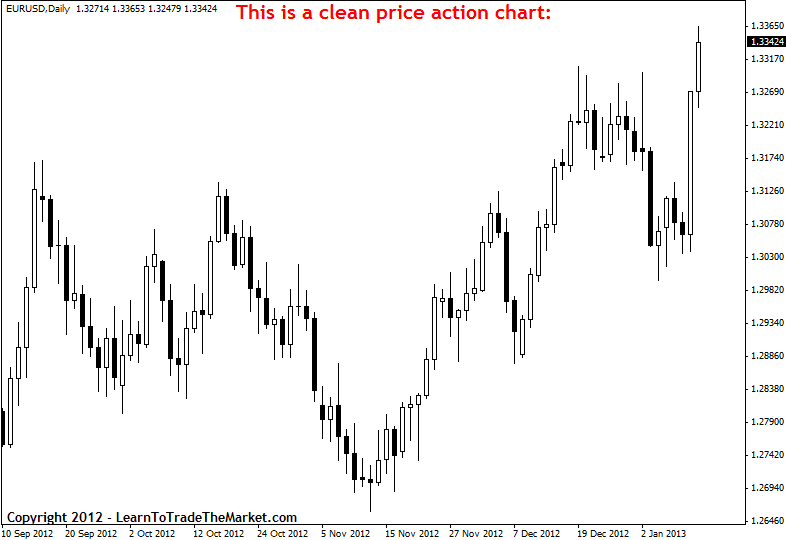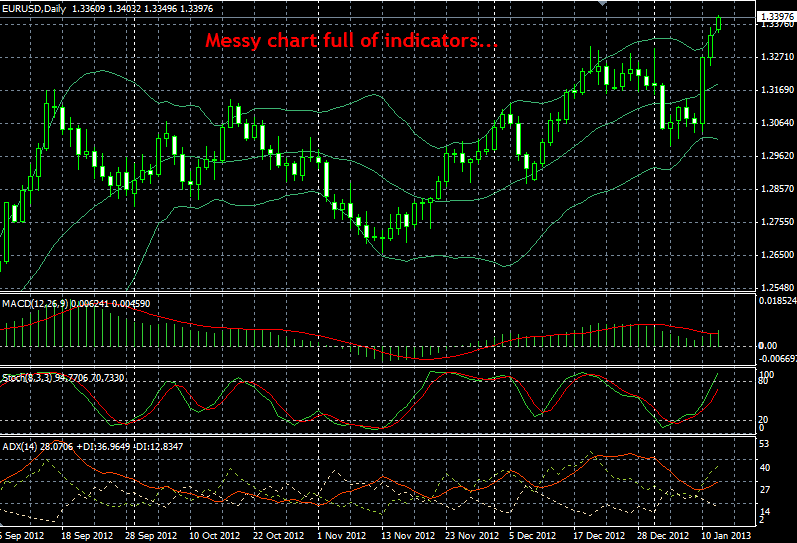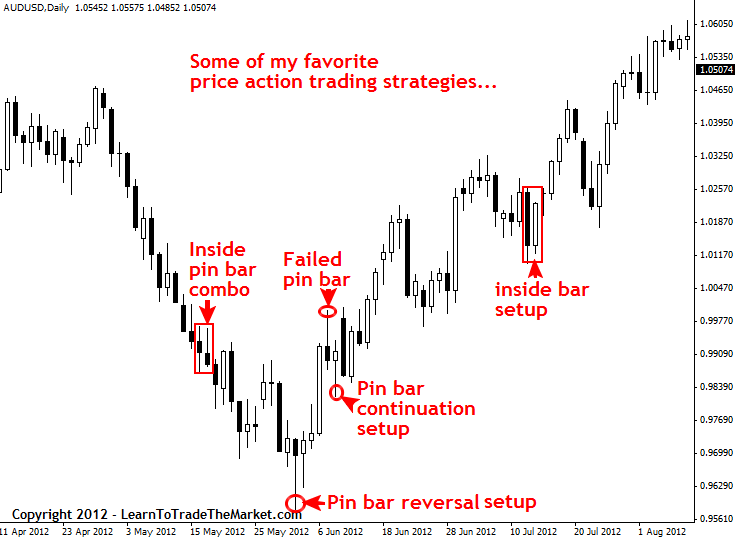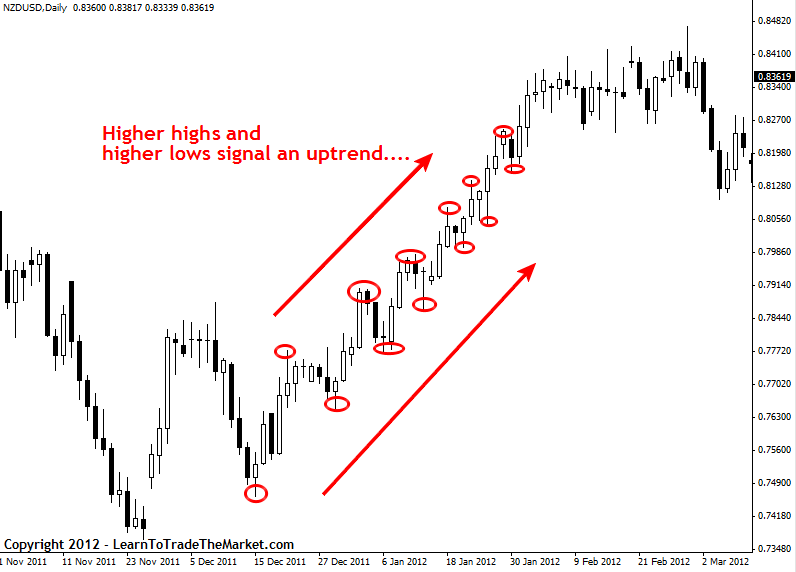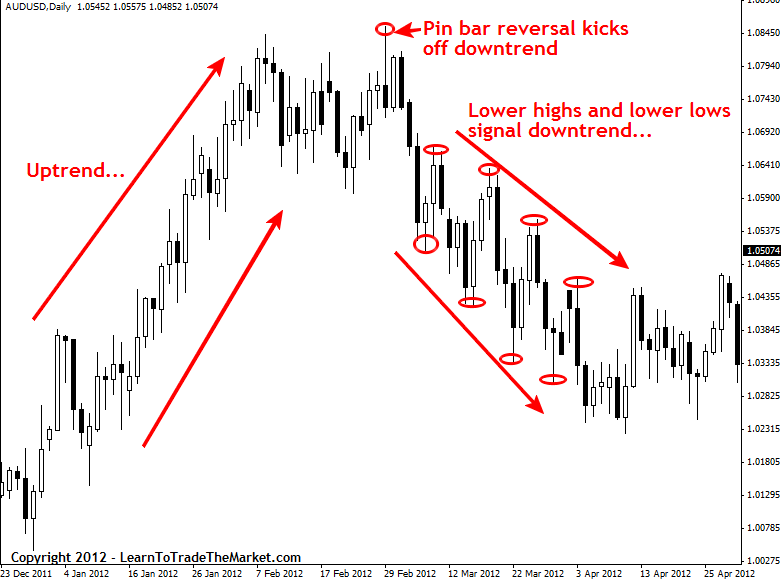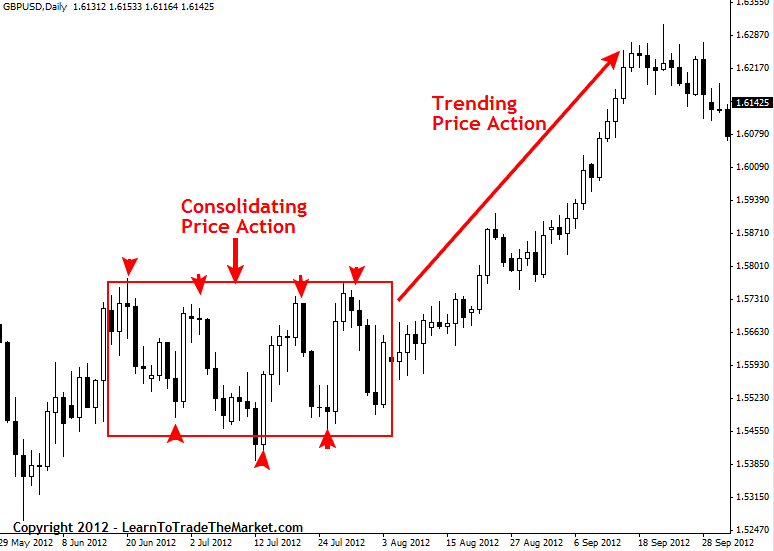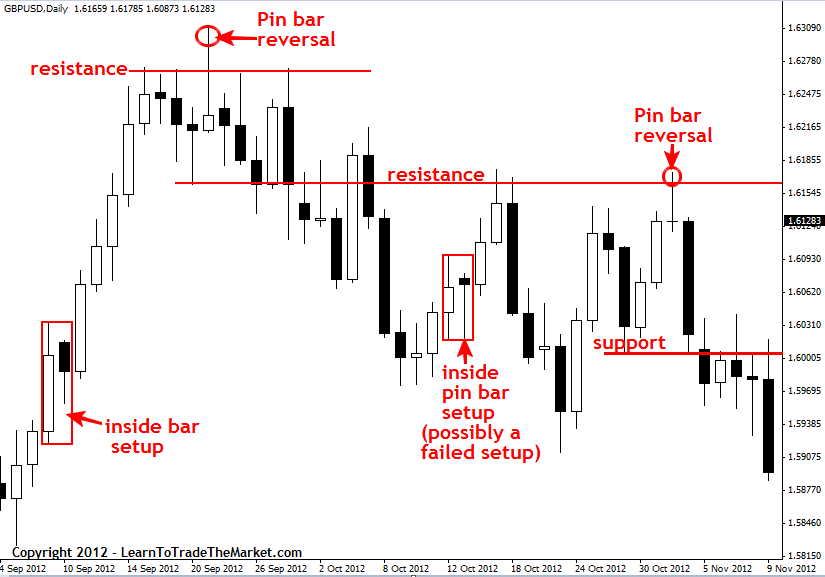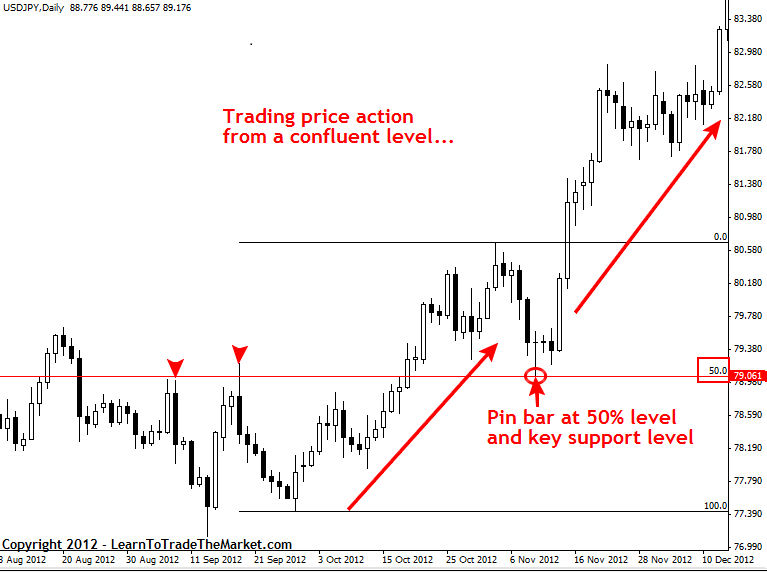Part 1: What Is Forex Trading ? – A Definition & Introduction
An Introduction to Forex Trading: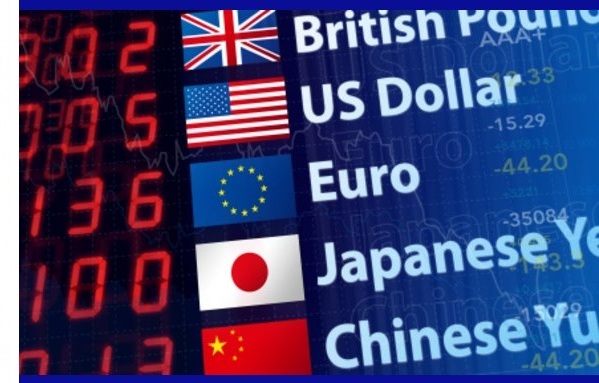 Hey traders,
Hey traders,This free Forex mini-course is designed to teach you the basics of the Forex market and Forex trading in a non-boring way. I know you can find this information elsewhere on the web, but let’s face it; most of it is scattered and pretty dry to read. I will try to make this tutorial as fun as possible so that you can learn about Forex trading and have a good time doing it.
Upon completion of this course you will have a solid understanding of the Forex market and Forex trading, and you will then be ready to progress to learning real-world Forex trading strategies.
What is the Forex market?
• What is Forex? – The basics…
Basically, the Forex market is where banks, businesses, governments, investors and traders come to exchange and speculate on currencies. The Forex market is also referred to as the ‘Fx market’, ‘Currency market’, ‘Foreign exchange currency market’ or ‘Foreign currency market’, and it is the largest and most liquid market in the world with an average daily turnover of $3.98 trillion.
The Fx market is open 24 hours a day, 5 days a week with the most important world trading centers being located in London, New York, Tokyo, Zurich, Frankfurt, Hong Kong, Singapore, Paris, and Sydney.
It should be noted that there is no central marketplace for the Forex market; trading is instead said to be conducted ‘over the counter’; it’s not like stocks where there is a central marketplace with all orders processed like the NYSE. Forex is a product quoted by all the major banks, and not all banks will have the exact same price. Now, the broker platforms take all theses feeds from the different banks and the quotes we see from our broker are an approximate average of them. It’s the broker who is effectively transacting the trade and taking the other side of it…they ‘make the market’ for you. When you buy a currency pair…your broker is selling it to you, not ‘another trader’.
• A brief history of the Forex market
 Ok,
I admit, this part is going to be a little bit boring, but it’s
important to have some basic background knowledge of the history of the
Forex market so that you know a little bit about why it exists and how
it got here. So here is the history of the Forex market in a nutshell:
Ok,
I admit, this part is going to be a little bit boring, but it’s
important to have some basic background knowledge of the history of the
Forex market so that you know a little bit about why it exists and how
it got here. So here is the history of the Forex market in a nutshell:In 1876, something called the gold exchange standard was implemented. Basically it said that all paper currency had to be backed by solid gold; the idea here was to stabilize world currencies by pegging them to the price of gold. It was a good idea in theory, but in reality it created boom-bust patterns which ultimately led to the demise of the gold standard.
The gold standard was dropped around the beginning of World War 2 as major European countries did not have enough gold to support all the currency they were printing to pay for large military projects. Although the gold standard was ultimately dropped, the precious metal never lost its spot as the ultimate form of monetary value.
The world then decided to have fixed exchange rates that resulted in the U.S. dollar being the primary reserve currency and that it would be the only currency backed by gold, this is known as the ‘Bretton Woods System’ and it happened in 1944 (I know you super excited to know that). In 1971 the U.S. declared that it would no longer exchange gold for U.S. dollars that were held in foreign reserves, this marked the end of the Bretton Woods System.
It was this break down of the Bretton Woods System that ultimately led to the mostly global acceptance of floating foreign exchange rates in 1976. This was effectively the “birth” of the current foreign currency exchange market, although it did not become widely electronically traded until about the mid 1990s.
(OK! Now let’s move on to some more entertaining topics!)…
What is Forex Trading?
 Forex trading
as it relates to retail traders (like you and I) is the speculation on
the price of one currency against another. For example, if you think the
euro is going to rise against the U.S. dollar, you can buy the EURUSD
currency pair low and then (hopefully) sell it at a higher price to make
a profit. Of course, if you buy the euro against the dollar (EURUSD),
and the U.S. dollar strengthens, you will then be in a losing position.
So, it’s important to be aware of the risk involved in trading Forex,
and not only the reward.
Forex trading
as it relates to retail traders (like you and I) is the speculation on
the price of one currency against another. For example, if you think the
euro is going to rise against the U.S. dollar, you can buy the EURUSD
currency pair low and then (hopefully) sell it at a higher price to make
a profit. Of course, if you buy the euro against the dollar (EURUSD),
and the U.S. dollar strengthens, you will then be in a losing position.
So, it’s important to be aware of the risk involved in trading Forex,
and not only the reward.• Why is the Forex market so popular?
Being a Forex trader offers the most amazing potential lifestyle of any profession in the world. It’s not easy to get there, but if you are determined and disciplined, you can make it happen. Here’s a quick list of skills you will need to reach your goals in the Forex market:
Ability - to take a loss without becoming emotional
Confidence - to believe in yourself and your trading strategy, and to have no fear
Dedication – to becoming the best Forex trader you can be
Discipline - to remain calm and unemotional in a realm of constant temptation (the market)
Flexibility - to trade changing market conditions successfully
Focus – to stay concentrated on your trading plan and to not stray off course
Logic – to look at the market from an objective and straight forward perspective
Organization – to forge and reinforce positive trading habits
Patience – to wait for only the highest-probability trading strategies according to your plan
Realism – to not think you are going to get rich quick and understand the reality of the market and trading
Savvy – to take advantage of your trading edge when it arises and be aware of what is happening in the market at all times
Self-control – to not over-trade and over-leverage your trading account
As traders, we can take advantage of the high leverage and volatility of the Forex market by learning and mastering and effective Forex trading strategy, building an effective trading plan around that strategy, and following it with ice-cold discipline. Money management is key here; leverage is a double-edged sword and can make you a lot of money fast or lose you a lot of money fast. The key to money management in Forex trading is to always know the exact dollar amount you have at risk before entering a trade and be TOTALLY OK with losing that amount of money, because any one trade could be a loser. More on money management later in the course.
• Who trades Forex and why?
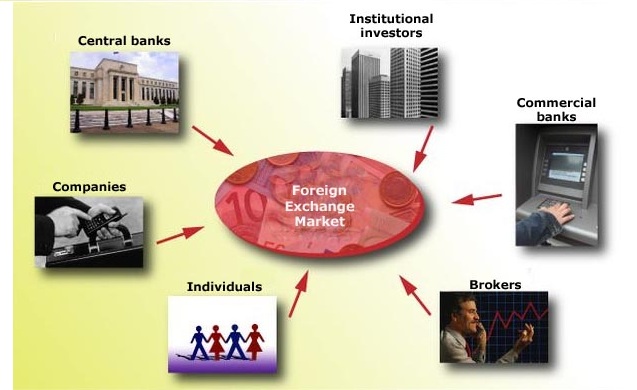 Banks – The interbank market allows for both the majority of commercial Forex transactions and large amounts of speculative trading each day. Some large banks will trade billions of dollars, daily. Sometimes this trading is done on behalf of customers, however much is done by proprietary traders who are trading for the bank’s own account.
Banks – The interbank market allows for both the majority of commercial Forex transactions and large amounts of speculative trading each day. Some large banks will trade billions of dollars, daily. Sometimes this trading is done on behalf of customers, however much is done by proprietary traders who are trading for the bank’s own account.Companies – Companies need to use the foreign exchange market to pay for goods and services from foreign countries and also to sell goods or services in foreign countries. An important part of the daily Forex market activity comes from companies looking to exchange currency in order to transact in other countries.
Governments / Central banks – A country’s central bank can play an important role in the foreign exchange markets. They can cause an increase or decrease in the value of their nation’s currency by trying to control money supply, inflation, and (or) interest rates. They can use their substantial foreign exchange reserves to try and stabilize the market.
Hedge funds - Somewhere around 70 to 90% of all foreign exchange transactions are speculative in nature. This means, the person or institutions that bought or sold the currency has no plan of actually taking delivery of the currency; instead, the transaction was executed with sole intention of speculating on the price movement of that particular currency. Retail speculators (you and I) are small cheese compared to the big hedge funds that control and speculate with billions of dollars of equity each day in the currency markets.
Individuals – If you have ever traveled to a different country and exchanged your money into a different currency at the airport or bank, you have already participated in the foreign currency exchange market.
Investors – Investment firms who manage large portfolios for their clients use the Fx market to facilitate transactions in foreign securities. For example, an investment manager controlling an international equity portfolio needs to use the Forex market to purchase and sell several currency pairs in order to pay for foreign securities they want to purchase.
Retail Forex traders – Finally, we come to retail Forex traders (you and I). The retail Forex trading industry is growing everyday with the advent of Forex trading platforms and their ease of accessibility on the internet. Retail Forex traders access the market indirectly either through a broker or a bank. There are two main types of retail Forex brokers that provide us with the ability to speculate on the currency market: brokers and dealers. Brokers work as an agent for the trader by trying to find the best price in the market and executing on behalf of the customer. For this, they charge a commission on top of the price obtained in the market. Dealers are also called market makers because they ‘make the market’ for the trader and act as the counter-party to their transactions, they quote a price they are willing to deal at and are compensated through the spread, which is the difference between the buy and sell price (more on this later).
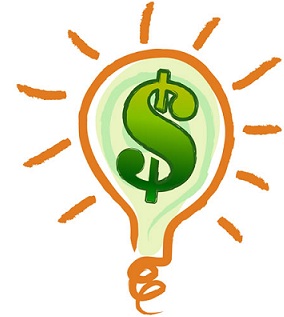 Advantages of Trading the Forex Market:
Advantages of Trading the Forex Market:• Forex is the largest market in the world, with daily volumes exceeding $3 trillion per day. This means dense liquidity which makes it easy to get in and out of positions.
• Trade whenever you want: There is no opening bell in the Forex market. You can enter or exit a trade whenever you want from Sunday around 5pm EST to Friday around 4pm EST.
• Ease of access: You can fund your trading account with as little as $250 at many retail brokers and begin trading the same day in some cases. Straight through order execution allows you to trade at the click of a mouse.
• Fewer currency pairs to focus on, instead of getting lost trying to analyze thousands of stocks
• Freedom to trade anywhere in the world with the only requirements being a laptop and internet connection.
• Commission-free trading with many retail market-makers and overall lower transaction costs than stocks and commodities.
• Volatility allows traders to profit in any market condition and provides for high-probability weekly trading opportunities. Also, there is no structural market bias like the long bias of the stock market, so traders have equal opportunity to profit in rising or falling markets.
While the forex market is clearly a great market to trade, I would note to all beginners that trading carries both the potential for reward and risk. Many people come into the markets thinking only about the reward and ignoring the risks involved, this is the fastest way to lose all of your trading account money. If you want to get started trading the Fx market on the right track, it’s critical that you are aware of and accept the fact that you could lose on any given trade you take.



 Price Action Trading Explained
Price Action Trading Explained